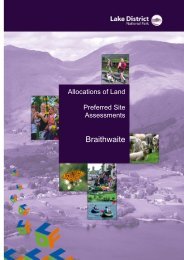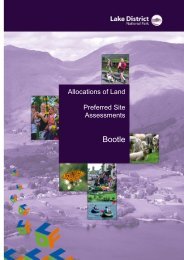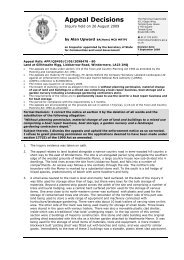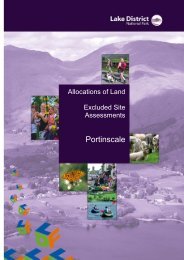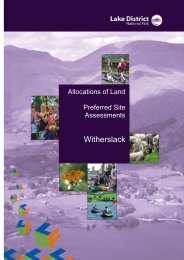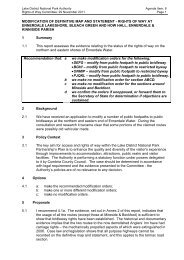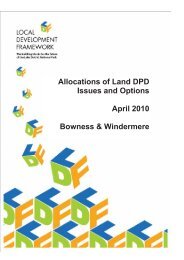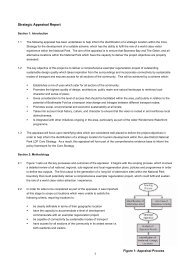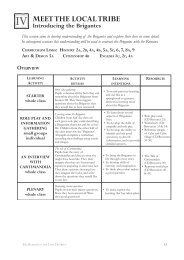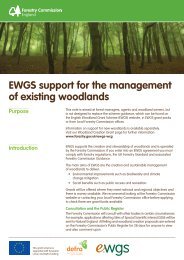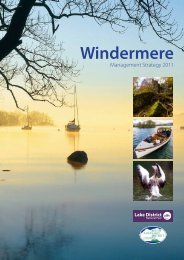The Partnership's Plan - Lake District National Park
The Partnership's Plan - Lake District National Park
The Partnership's Plan - Lake District National Park
Create successful ePaper yourself
Turn your PDF publications into a flip-book with our unique Google optimized e-Paper software.
We will work to ensure that rural housing provision does not disappear from the Government’s<br />
agenda. We can facilitate joint working, helping to increase land acquisition and ensure new<br />
sustainable housing while respecting local character, distinctive design and sensitive locations.<br />
3.10.4 Key partners<br />
Key partners include the <strong>National</strong> <strong>Park</strong> Authority, <strong>District</strong> Councils as Housing Authorities,<br />
Local Strategic Partnerships, Housing Associations, Cumbria Rural Housing Trust, Parish<br />
Councils and Action with Communities in Cumbria, Community Land Trusts and land owners.<br />
3.11 Transport and movement<br />
3.11.1 Facts and challenges<br />
• <strong>The</strong> <strong>National</strong> <strong>Park</strong> is served by roads, bus routes, rail links, cycle routes, bridleways<br />
and footpaths, and boats on the four largest lakes. Most people live in our towns and<br />
villages but the <strong>Lake</strong> <strong>District</strong>’s activities, from farming to tourism, rely on a complex<br />
rural network. Access to and within our rural areas is the biggest challenge. Public<br />
transport is seasonal and limited to more popular areas. Access to the deeper rural<br />
areas and out of season becomes difficult without a car.<br />
• Car ownership is high compared to County and Country averages, but broadly in line<br />
with other <strong>National</strong> <strong>Park</strong>s. Yet the <strong>Lake</strong> <strong>District</strong>’s transport carbon footprint is<br />
significantly higher than other <strong>National</strong> <strong>Park</strong>s and nearly double the North West’s<br />
average.<br />
• Half of personal travel is by residents, mostly for leisure, then shopping and commuting.<br />
<strong>The</strong> other half is visitor travel. Almost three quarters of our eight million tourists each<br />
year are day visitors. Most arrive and travel around by car and sight seeing is one of<br />
the most popular activities.<br />
• Despite being rural, with challenging terrain, we have a relatively good public transport<br />
network with a wide range of services. But the network is poorly integrated. Our cycle<br />
network is fragmented. Most car users say they would like easy opportunities to use<br />
their car less, at least some of the time.<br />
• Congestion is common on weekends and holiday periods, particularly on the A591<br />
spine between junction 36 on the M6 to Keswick, and at popular destinations in the<br />
central <strong>Lake</strong> <strong>District</strong>. This spoils visitors’ enjoyment, residents’ quality of life and affects<br />
public safety. People are less likely to take sustainable travel options such as walking<br />
and cycling along these routes.<br />
• Car parking provision, pricing and quality is inconsistent, as are associated facilities<br />
such as toilets and information.<br />
51



